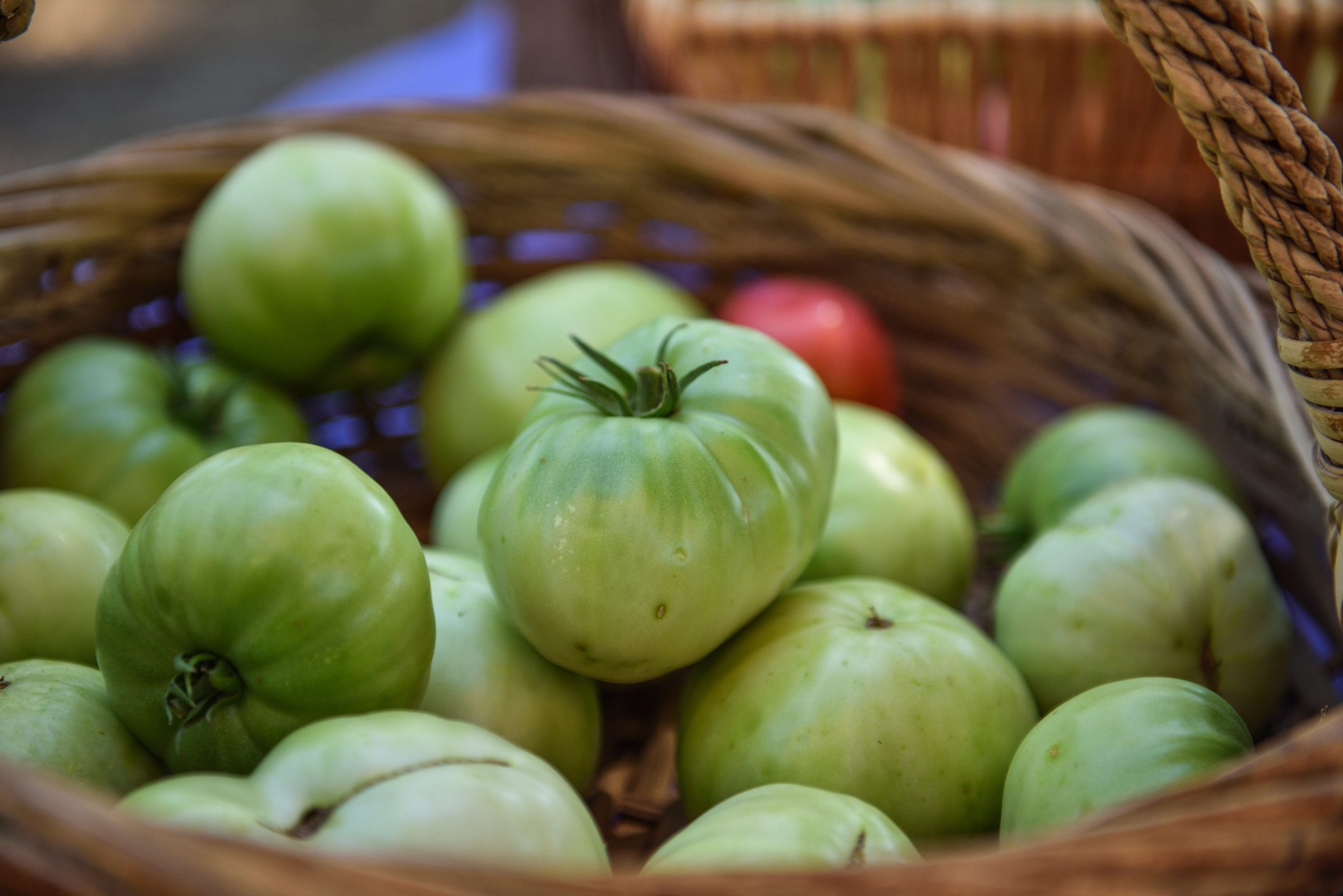Weed out bad garden myths on the best way to ripen green tomatoes, what to plant near black walnut trees, and more.

The Best Way to Ripen Green Tomatoes and More Garden Myths Debunked

On This Page
Myth: To Ripen Green Tomatoes, Give Them Sunlight

FACT: A common misconception on the best way to ripen tomatoes is that you need a lot of light, but sunlight isn’t actually needed. For slow ripening, put tomatoes in a cool basement and wrap them individually in newspaper to contain the ethylene gas given off by the fruit that hastens ripening. Store both ripe and unripe fruits together for faster results.
Discover more mistakes you’re making with your tomato garden.
Myth: Compost Bins and Piles Smell Awful

FACT: If your compost pile has anything but a pleasant earthy smell, it’s not being properly worked. Get the basics to start composting for a healthy, stink-free pile. Anaerobic composting means there might be a lack of oxygen in the pile. It will break down—slowly—but will have a swampy smell. Turn the pile regularly to introduce oxygen and help mitigate any odor. Add dry leaves and a few shovels full of soil to keep composting materials from turning slimy. And never add raw meat, bones or pet waste to the pile.
Learn how to build a DIY compost bin.
Myth: You Can’t Plant Anything Near a Black Walnut Tree

FACT: While black walnut trees do release an allelopathic chemical called juglone, which can inhibit the growth of some plants, many others are able to grow perfectly well beneath and near them. Zinnia, daylily, phlox, shasta daisy, begonia, Japanese maple, forsythia and purple coneflower all are capable of thriving near a black walnut tree. Your local cooperative extension or master gardener program will have a complete list for your region.
You’ll immediately want to steal these genius garden hacks.
Myth: Newspaper and Cardboard Are Superb Weed Barriers

FACT: In certain situations, newspaper and cardboard can be used as weed barriers and then covered with wood chips or organic mulch. The problem is, they can impede water penetration and gas exchange if they become too wet or too dry. The same goes if they’re applied too heavily. Use no more than four to six sheets of newspaper or one layer of cardboard as sheet mulch.
Should you use coffee grounds in the garden?
Myth: You Should Paint Tree Wounds After Pruning

FACT: This is an old practice of tree care that has fallen out of favor. In most cases, painting a blemish doesn’t serve a purpose and may actually negatively affect the sealing of the wound. However, there are exceptions: If you are pruning a tree that could be threatened by the disease-carrying beetles attracted to a fresh wound, tree-wound paint can help. Consider it for the types of oak trees that are susceptible to oak wilt in particular.
Psst—this is when you should prune trees and shrubs.
Myth: For the Best Garden Soil, Cultivate Regularly

FACT: Some cultivation is helpful with heavy or compacted soils but too much can turn the topsoil into a powdery dust that repels water and is not conducive to root growth. Also, frequent cultivation exposes more of the soil to the sun, which can dry it out and cut down the amount of beneficial microbes.
Can you reuse potting soil in planters?
Myth: Pepper Plants Aren’t Producing Because the Soil is Too Rich

FACT: While overly rich soil will favor foliage over flowers, it won’t stop pepper plants from bearing fruit altogether. It’s more likely that a lack of flowering (and subsequent pepper production) is due to weather. A hot, drying wind will cause flowers to drop off. Also, many pepper plants are very temperature sensitive, so flowers will drop off below 55 degrees or above 85 degrees.
Myth: Wood Chips Make the Best Mulch

FACT: That depends on where and how you’re using them. Wood chips are a wonderful mulch for a natural garden, but they hold too much moisture in the soil for drought-tolerant cactuses and succulents. There are other caveats, too. Don’t spread the wood chips too heavily (no more than 3 inches thick) and don’t pile them against plant stems or tree trunks—this can cause problems with insects and rot.
We asked a garden expert: Is it OK to use rubber mulch?
Myth: Grass Clippings Will Cause Lawn Thatch to Build up

FACT: Short grass clippings do not contribute to lawn thatch—a thick layer of dead plant debris that makes it difficult for new turf to emerge. In fact, it’s advised to leave your grass clippings in place, rather than bagging them, especially if you have a mulching mower. It’s less work and the clippings are a free source of nitrogen for your lawn. For the best-looking grass, always keep lawn mower blades sharp.
Myth: You Need to Water Plants Daily

FACT: Container plants may need a dousing daily, but those planted in landscapes do not. It’s better to water once or twice a week and to irrigate deeply. Shallow watering encourages roots to stay near the surface. Instead, you want roots to grow deep so plants are self-sufficient during dry periods. Obviously, cactuses and succulents need less water. Check the soil moisture before getting out the hose.
Next, check out secret garden tips we learned from grandma.






















